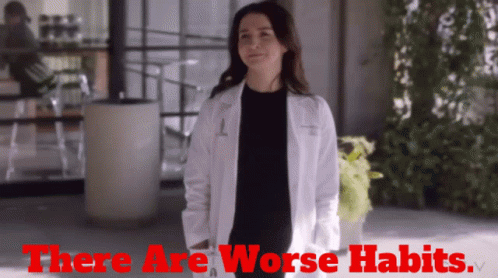Exploring Drug Clearance: Understanding the Liver's Role
Written on
Chapter 1: Introduction to Drug Metabolism
This article is the fifth installment in our series on drug mechanisms, where we simplify complex topics by examining caffeine and other substances. You can access this insightful piece for free on my Substack, "Lessons on Drugs."
Thus far, we've explored how drugs enter the body, navigate through the bloodstream, and interact with receptors to produce their effects. In this section, we'll focus on the liver's essential role in the initial phase of drug clearance from the body.
Section 1.1: The Liver's Function
Those who have followed along will remember hints about the liver's importance from our previous discussion on first-pass metabolism, which occurs after drugs are ingested. Now, we will delve deeply into this subject.
I've never smoked, even during my teenage years when peer pressure was at its peak. My avoidance wasn’t due to fears of lung cancer or rule-breaking; it was purely a matter of vanity. My concern about maintaining a bright smile outweighed any perceived advantages of smoking.

I see my avoidance of smoking as a lucky escape. I suspect that if I had started, quitting would have been an immense challenge. Nicotine is notoriously addictive, making it difficult for many to stop. Furthermore, I tend to adopt new habits quickly.
The most effective strategy I've found for breaking a negative habit is to replace it with a less harmful one. For example, if I'm used to grabbing a chocolate bar from the vending machine at 3 PM, I might switch to a chocolate-flavored protein drink.

Had I taken up smoking, I might have compensated for the lack of nicotine by consuming more coffee. After a few days of jitters, I would likely revert to smoking to alleviate those symptoms, reinforcing my belief that quitting is more challenging than it’s worth.
However, I would be mistaken. While my jitters could stem from nicotine withdrawal, they might also relate to another substance: caffeine.
Section 1.2: Caffeine's Role in Drug Interactions
Imagine a supermarket bustling with shoppers, each pushing carts filled with groceries. This setting isn't particularly modern; each checkout line is numbered, and human cashiers quickly assess the contents of each cart.
If your cart is filled only with soda cans, you'll be directed to the express lane. If it contains hair products, you’ll be sent to the even-numbered lanes. And if you have alcohol, you'll be assigned to lane nine and asked to wait.
As you observe, you notice that when a cashier returns from a break, the pace at which groceries are processed changes. Some cashiers work efficiently and quickly, while others move at a sluggish pace, causing delays for customers.

This scenario serves as an analogy for what occurs in the liver during drug metabolism. The liver's primary function is to transform substances in the bloodstream into forms that can be eliminated by the kidneys, similar to how groceries are repackaged for transport home.
The various checkout lines and their operators symbolize the different enzymes present in the liver. These enzymes break down drug molecules into components that can enter urine for excretion.
Some drugs are metabolized by specific enzymes, while others may be processed by a variety of them. Notably, two important enzyme groups are alcohol dehydrogenase and the cytochrome P450 (CYP450) enzymes.
Alcohol dehydrogenase (along with aldehyde dehydrogenase) breaks down ethanol found in alcoholic drinks, while the CYP450 enzymes are responsible for metabolizing a wide range of drugs.
Genetic differences impact the quantity of these enzymes individuals possess. Consequently, drug guidelines may vary for different ethnic groups due to known differences in drug metabolism. This genetic variability can also explain why certain ethnicities may have lower alcohol tolerance.
While our genes determine our baseline enzyme levels, environmental factors affect how efficiently these enzymes function over time. In our supermarket analogy, this is akin to cashiers being influenced by their breaks and refreshments. Some may work faster, some slower, and others remain unaffected.

Similarly, liver enzymes can be affected by the substances we ingest. Certain substances can enhance enzyme activity, leading to faster drug breakdown—a process known as induction. This results in reduced drug levels in the bloodstream.
Conversely, some drugs can slow enzyme activity, a phenomenon referred to as inhibition. This leads to an accumulation of drugs in the bloodstream for extended periods, creating potential drug-drug interactions.
To illustrate this, let’s revisit the relationship between caffeine and smoking. The image below may clarify the dynamics at play.

Caffeine is primarily metabolized by a CYP450 enzyme known as CYP1A2, which is susceptible to environmental influences. Cigarette smoke accelerates the activity of CYP1A2, leading to quicker caffeine clearance. This means that smokers may experience reduced effects from caffeine compared to non-smokers.
Regular smokers may not notice this reduction due to the stimulating effects of nicotine compensating for the diminished caffeine impact.

When someone quits smoking, the CYP1A2 enzyme's activity decreases, resulting in higher caffeine levels after consuming the same amount. If you attempt to replace smoking with increased coffee consumption, you may find yourself with significantly elevated caffeine levels in your bloodstream.
As discussed in previous posts, elevated drug levels can lead to adverse effects. For caffeine, this may include feelings of anxiety and jitters, which can easily be mistaken for nicotine withdrawal, providing a compelling reason to resume smoking.
The takeaway for smokers is to monitor caffeine intake when quitting, even if using nicotine replacement therapies. Furthermore, if you're taking other medications, herbal products, or supplements, it's wise to understand potential drug interactions. This is especially crucial when starting or stopping any treatment, as this can disrupt your system. Always consult with a pharmacist or healthcare provider if you have questions or need further information.
Thank you for reading! If you're interested in learning more about drug mechanisms, consider following or subscribing to my free Substack, "Lessons on Drugs," for weekly articles.